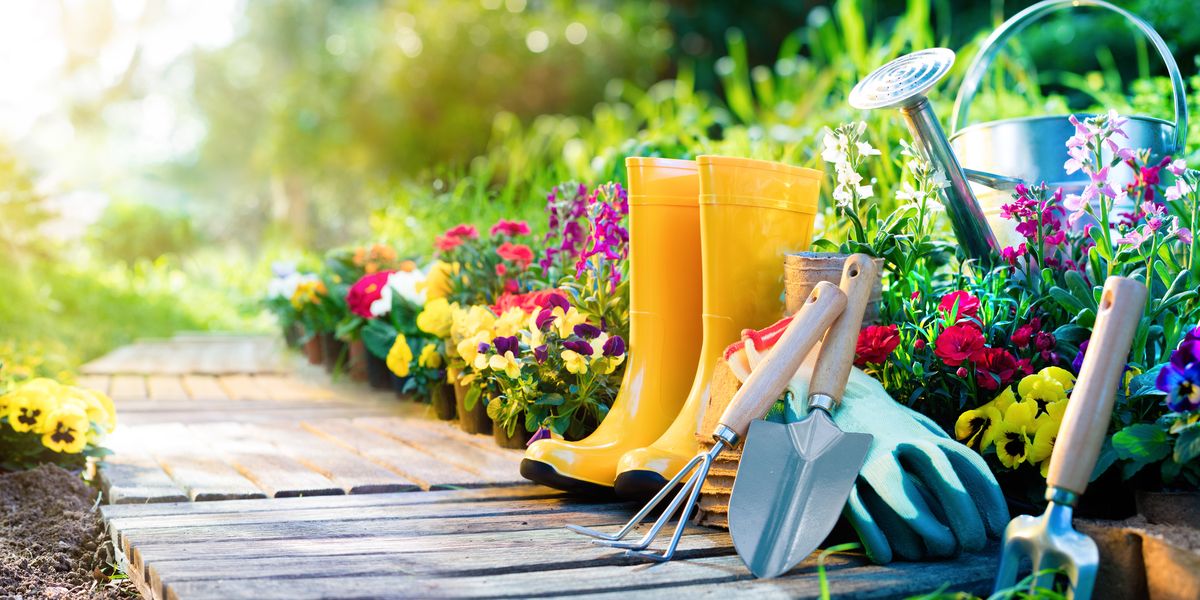From Seed to Bloom: Nurturing Your Passion with Home Gardening for Beginners
Wiki Article
From Seed to Sprout: A Newbie's Guide to Horticulture Success

Selecting the Right Seeds
To make certain a successful yard, you need to choose the right seeds for your expanding conditions and wanted plants. Different plants grow in different environments, so it's essential to choose seeds that are appropriate for your specific area. On the other hand, if you live in a cooler environment with much shorter growing periods, look for seeds that have a shorter maturation period.Another aspect to consider is the sort of dirt in your yard. Some plants prefer sandy soil, while others prosper in clay or fertile dirt. Understanding the structure of your dirt will certainly help you choose seeds that will expand well in your yard. In addition, think about the amount of sunlight your yard obtains. Some plants, like peppers and tomatoes, need full sun to prosper, while others, such as leafy environment-friendlies, can endure partial color.
If you're interested in flowers, select seeds for plants that will enhance each various other in terms of bloom, elevation, and color time. By carefully picking the best seeds for your expanding problems and desired plants, you'll establish yourself up for an effective garden.
Preparing the Dirt
Since you've selected the appropriate seeds for your garden, it's time to prepare the dirt for ideal development. Preparing the soil is an essential action in gardening success, as it provides the foundation for your plants to grow.Begin by getting rid of any type of weeds or particles from the location where you prepare to plant (gardening for beginners). Weeds can take on your plants for nutrients and water, so it is very important to do away with them before planting. Utilize a yard fork or hoe to loosen the soil, separating any clumps and developing a loosened, crumbly structure
Spread a layer of organic matter over the dirt and make use of a yard fork or rake to include it into the top few inches. This will certainly assist enhance water drainage, dampness retention, and vitamins and mineral availability for your plants.
Many plants choose a somewhat acidic to neutral pH, around 6.0 to 7.0. You can purchase a soil testing set from a garden center or send out an example to a laboratory for evaluation.
Growing and Watering Methods
When it comes to planting, make sure to adhere to the directions on the seed packets or plant tags. Different plants have various demands for planting deepness and spacing.Watering is a crucial action in gardening. It is very important to sprinkle your plants properly to advertise healthy development. The secret is to offer adequate water without drowning the plants. When watering, aim to dampen the dirt uniformly, ensuring that the water gets to the plant's roots. Stay clear of overwatering, as this can result in root rot and various other issues. An excellent general rule is to water deeply yet less regularly, enabling the dirt to dry out a little between sprinkling sessions.
To figure out when to water, check the wetness degree of the dirt by putting your finger concerning an inch deep. If it really feels completely dry, it's time to water. Take into consideration using a watering can or a tube with a gentle spray nozzle to prevent harmful fragile plants.
Nurturing and Maintaining Your Yard
Nurturing and keeping your yard is crucial in order to maintain your plants growing and healthy and balanced. Routinely get rid of any type of unwanted plants that might compete with your yard for nutrients and space. Using a layer of mulch around your plants aids save moisture, reduce weeds, and regulate dirt temperature.Harvesting and Enjoying the Fruits of Your Labor
When can you begin reaping the benefits of your difficult work in the garden? The answer depends on the type of plants you have actually grown.To identify if your vegetables are ready for harvest, you need to seek particular indicators. Ripe tomatoes will certainly be firm and have a deep, vivid color. When delicately drawn, they should easily remove from the creeping plant. Peppers, on the various other hand, need to be plump and have a glossy appearance.
When harvesting, it is essential to utilize the appropriate devices and strategies. A sharp set of trimming shears or a yard blade can be made use of to easily reduce veggies from the plant. Be certain to collect in the early morning when the temperature levels are cooler, as this will certainly aid keep the quality of your produce.
When you have gathered your vegetables, it's time to take pleasure in the fruits of your labor. Newly chosen vegetables can be utilized in a selection of tasty recipes, from salads to stir-fries. Additionally, you can protect your harvest by canning, freezing, or drying them to delight in throughout the year.

Final Thought
By complying with these beginner-friendly strategies, you are well on your way to supporting a growing garden. Keep in mind to offer your plants the treatment and interest they require, and quickly you will be taking pleasure in the elegance and bounty of your very own garden.To make certain a successful garden, you require to pick the right seeds for your growing problems and wanted plants. By carefully choosing gardening tools for beginners the ideal seeds for your expanding conditions and wanted plants, you'll establish yourself up for an effective garden.
Weeds can complete with your plants for nutrients and water, so it's important to get rid of them before planting. When it comes to planting, make sure to follow the directions on the seed packages or plant tags. Different plants have different needs for planting depth and spacing.
Report this wiki page